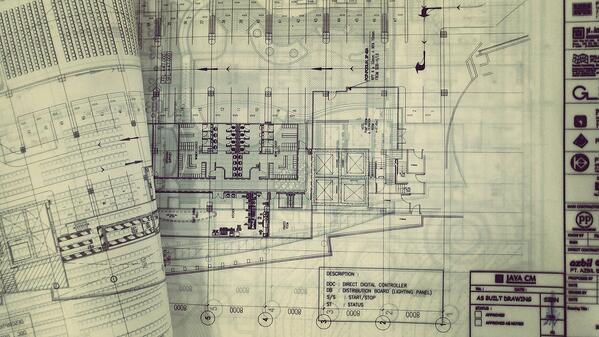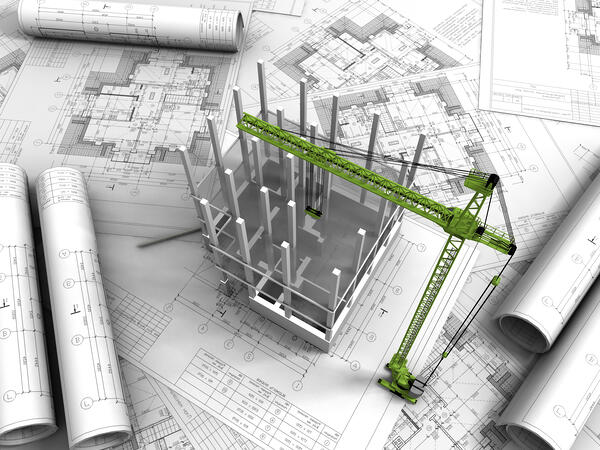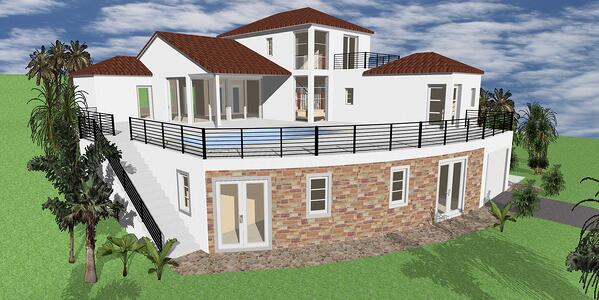The value of As Built drawings is often underrated, especially their importance for the efficient management of the project after construction has been completed. This article takes a brief look at As Built drawings; what they are, how they are created and why they are important.
As Built drawings
As Built drawings are defined as “Revised set of drawing submitted by a contractor upon completion of a project or a particular job. They reflect all changes made in the specifications and working drawings during the construction process, and show the exact dimensions, geometry, and location of all elements of the work completed under the contract. Also called record drawings or just as-builts.”

They are the original design drawings revised to reflect any changes made in the field, such as design changes issued by variations/change order, modifications, component relocations required for coordination, rerouting of distribution systems, shop drawing changes, extra works, etc. As such, the As Built drawings allow a comparison between the initial design and the final product, and provide a detailed plan of the actual completed structure.
As Built drawings are much easier to create at the end of the project if the contractor tracks precisely and continually how the structure and adjoining land change as work progresses during every phase of construction. This is usually done with As Built surveys, which record variations from original plans to what is actually built. Many government agencies require the As Built surveys to confirm the actual locations of underground improvements.
As Built drawings represent a valuable component of any completed project, and enhance the contractor’s professional image with clients. This is because As Built drawings provide a record of what was actually constructed beyond the original blueprints.
With a full history of project changes, owners will have an exact record of what has been built, which becomes important for any future additions or renovations work or ownership changes, especially if the original architects and contractors are not available after completion of the construction.
As Built drawings are also an important part of regulatory sign-offs with local government and external certifying firms in order to receive occupational certification for the project.

Components of As Built drawings
There is a vast amount of details to be recorded during construction in order to produce the significant quantity of information to be included in the As Built drawings. However, this seemingly time consuming task is important for projecting a professional image of the contractor with its clients and for increasing its chances of getting more work on future projects.
As mentioned above, As Built drawings include an extensive amount of details and documents. The following are some examples of such details:
- Changes in materials, dimensions, locations, installations, fabrications, etc.
- Dates that changes were made.
- Changes made as a result of the final inspection.
- Unanticipated obstacles confronted by the contractor and how they were overcome.
- Related shop drawings and appendices.

Preparing the As Built Drawings
As Built drawings are normally prepared by the architects and engineers who initially designed the project because they are conversant with the original specifications. This makes them the most logical choice to record the changes that took place during construction.
As Built drawings are much easier to prepare when the contractor keeps detailed records of changes during every phase of construction. Many contractors find that the use of technology can make this overwhelming process much less time consuming. A good construction software enables the contractor to track adjustments and variations closely and instantly, which ensures that no changes are overlooked, and that errors are minimised in recording them.

Impact of Technology on preparing As Built drawings
Keeping detailed records of all changes during every phase of construction is a tedious and time-consuming process, especially that it happens numerous times during the construction of a project. Turning over documentation and drawings to a digital platform can eliminate these difficulties, and improve the efficiency of project completion.
Employing the right construction technology enables contractors to record in real time during construction all the changes to the initial design. That information will assist them to create As Built drawings more easily and accurately.
The chosen construction technology must provide online, real-time access of the latest uniform data to all project stakeholders. This ensures that the latest true version of the information is available in a digital form to all interested parties, especially to the facility management and maintenance teams.

Commissioning of As Built drawings
Many owners elect to include quality assurance of the As Built drawings as a part of their commissioning process to test their accuracy and completeness.
The scope required by owners in the commissioning of As Built drawings depends on the desired results of the commissioning process, such as timely delivery, accuracy of elements important for operation and maintenance, accuracy and completeness of location and sizes of equipment and distribution systems, etc. If accuracy of the As Built documents is a priority, they must be reviewed against the actual installation.
This review can be done as a walk through of the structure after construction is complete, which could be disruptive to occupants. Also, the ability to verify installation of concealed, non-accessible elements could be restricted.
Alternatively, the review could be undertaken before the system elements are concealed, which requires coordination between the contractor and the reviewers to make sure that the reviews are carried out prior to concealment without disrupting the construction schedule.
Perhaps the most effective way to ensure that all system components are documented is by regular reviews as construction progresses (e.g. monthly). This is also the most time intensive and costly method of review.






